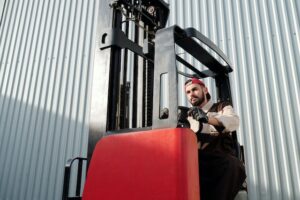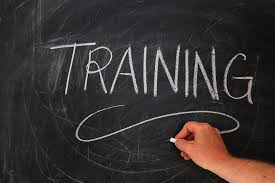
Choosing the right forklift training provider is essential to ensure you receive quality training and gain the skills and knowledge required to operate a forklift safely. With numerous providers available, it can be challenging to determine which one is the best fit for your needs. In this conversation, we will discuss considerations to keep in mind when choosing a forklift training provider.
Accreditation
 The first consideration when selecting a forklift training provider is whether a reputable accrediting body accredits it. Accreditation ensures that the training provider meets the standards set by the industry and relevant regulatory bodies. It also means that the training provider has undergone an evaluation of its facilities, instructors, curriculum, and resources, ensuring that it provides quality training. Therefore, checking the accreditation status of a provider should be a top consideration.
The first consideration when selecting a forklift training provider is whether a reputable accrediting body accredits it. Accreditation ensures that the training provider meets the standards set by the industry and relevant regulatory bodies. It also means that the training provider has undergone an evaluation of its facilities, instructors, curriculum, and resources, ensuring that it provides quality training. Therefore, checking the accreditation status of a provider should be a top consideration.
Curriculum
The second consideration is the curriculum that the training provider offers. Look for a provider that offers a comprehensive and up-to-date curriculum that covers all aspects of forklift operation. The provider should offer classroom and hands-on training, including practical exercises, to provide a well-rounded learning experience. The curriculum should also cover safety guidelines, maintenance procedures, and emergency protocols.
Experience of Instructors
The third consideration is the experience of the instructors delivering the training. Ensure the instructors are certified and have extensive experience operating forklifts and providing training. Experienced instructors have a wealth of knowledge and expertise to share with students, enhancing the learning experience. Look for a provider that invests in its instructors’ continued education and development, ensuring that they stay up-to-date with industry changes and advancements.
Flexibility and Customization
 Finally, consider the flexibility and customization options that the provider offers. Look for a provider that offers flexible scheduling to accommodate your needs. The training provider should be willing to tailor its training program to meet your specific needs, the size of the group attending, the type of equipment used by trainees, or any other relevant criteria. Customization ensures that you receive training relevant to your workplace and specific needs. Choosing the right forklift training provider is crucial in acquiring the necessary skills and knowledge required to operate a forklift safely.
Finally, consider the flexibility and customization options that the provider offers. Look for a provider that offers flexible scheduling to accommodate your needs. The training provider should be willing to tailor its training program to meet your specific needs, the size of the group attending, the type of equipment used by trainees, or any other relevant criteria. Customization ensures that you receive training relevant to your workplace and specific needs. Choosing the right forklift training provider is crucial in acquiring the necessary skills and knowledge required to operate a forklift safely.
Accreditation, curriculum, experience of instructors, and flexibility and customization options are essential considerations when selecting a training provider. A reputable provider that meets these criteria will provide quality training that prepares you for the challenges of operating a forklift safely and efficiently, which will benefit you personally and improve efficiency and safety within the workplace.


 This includes making speakers aware of what makes information newsworthy as well as what media relations is all about. It is the responsibility of the speaker to clarify the purpose of the interview in addition to identifying the audience’s interests and needs. The aspect of preparation is important as it allows the spokesperson let the interviewer do their job and at the same time position the organization they represent well.
This includes making speakers aware of what makes information newsworthy as well as what media relations is all about. It is the responsibility of the speaker to clarify the purpose of the interview in addition to identifying the audience’s interests and needs. The aspect of preparation is important as it allows the spokesperson let the interviewer do their job and at the same time position the organization they represent well. The primary goal of a spokesperson is to introduce and put emphasis on his or her key messages. Since repetition equals retention, speakers need to earn how to recall crucial points without sounding monotonous. If this is not done, there is no chance that the media will recall them. Additionally, appearance, gestures, tone and facial expressions can also influence the delivery of the message and thus learn the aspect of efficient delivery lets speakers know how to use the said elements to their advantage.
The primary goal of a spokesperson is to introduce and put emphasis on his or her key messages. Since repetition equals retention, speakers need to earn how to recall crucial points without sounding monotonous. If this is not done, there is no chance that the media will recall them. Additionally, appearance, gestures, tone and facial expressions can also influence the delivery of the message and thus learn the aspect of efficient delivery lets speakers know how to use the said elements to their advantage.